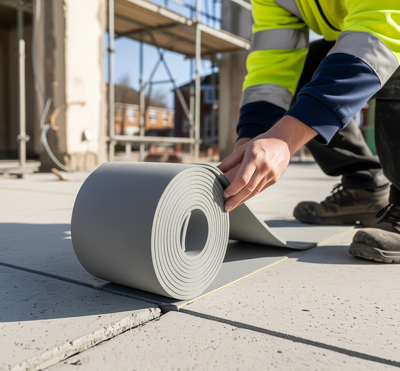
Construction is at the intersection of old building techniques and new material science. Modern projects require buildings that not only survive the weather but also adapt, change, and deliver flawlessly over decades of occupation. As the climate changes and urban development grows complicated, contractors are adopting a new ethic: building structures that anticipate. This transformation calls for materials that will bend without failing, systems that predict failures before they happen, and construction methods that value long-term performance over short-term gains.
Addressing Real-Life Challenges Head-On
Australian construction sites pose distinct challenges that need more than generic solutions. From expansive clays to seashores that push every material to its limits, construction conditions cannot be taught in textbooks. The solution is adaptive construction with materials and systems that use smart thinking to anticipate their surroundings. State-of-the-art expansion systems, such as specialised expansion foam installations, enable buildings to shift naturally with temperature fluctuations and settling, avoiding the stress cracks that haunt inflexible designs. It's about constructing in partnership with nature, not against it, building structures that coexist with their environment.
Standards as Success Drivers: Beyond Basic Compliance
Passing inspections is not just about complying with building codes but about establishing the basis for success that goes far beyond the completion of a project. Australian building standards have moved towards solving not only short-term issues of safety but also long-term performance and sustainability. Each specification has been created because someone had an expensive education in what occurs when corners are cut. Quality-tested materials and tried-and-true systems don't simply meet regulators' requirements; they offer protection against callbacks, warranty claims, and damage to reputation. When contractors select certified products and adhere to tried procedures, they're making a financial investment in future success as much as they are in the current project.
Translating Challenges into Competitive Strengths
Effective construction management these days is more akin to high-level logistics than old-fashioned building. Each delay triggers a cascade effect that can sidetrack schedules and budgets, so effective workflow management is now a competitive imperative. Innovative contractors are aligning with suppliers who comprehend the beat of building sites: partners who can bring certain materials to precise spots at exactly the right time. This coordination goes far beyond straightforward delivery to encompass technical assistance, installation instructions, and problem-solving skills. Supply chains that run as smoothly as well-oiled machines allow construction crews to keep their momentum going and turn out outstanding results day after day.
Building Stability from the Ground Up
Foundation systems in the contemporary world are an advanced realisation of how buildings have interacted with their surroundings over time. Apart from simple bearing function, foundations nowadays must address water intrusion, thermal expansion, and gradual settlement and soil movement. State-of-the-art foundation systems include controlled cracking management systems, strategic placement of reinforcements, and moisture management systems that act preemptively, not reactively. Such systems accept that movement can't be prevented—the issue is how and where it occurs. By including flexibility in the core, developers construct houses that weather benignly rather than fighting a losing battle against the forces of nature.
Efficiency Through Innovation: Smarter Tools for Smarter Building
Construction labour efficiency has moved beyond being a cost-saving initiative to becoming a strength for business. New building materials and technology are produced to deliver maximum precision and minimise installation time, delivering added value in the form of higher productivity rather than diminished quality. Pre-assembled components, high-cure materials, and precision-fit fasteners allow crews to install more quickly without sacrificing quality. These technologies also reduce the physical burden on employees, i.e., enhanced safety performance and higher job satisfaction. Where equipment becomes smarter, so can people, producing a virtuous circle that pays dividends from individual tradespeople through to owners.
Future-Ready Construction: Building for Generations
The union of strength with flexibility is what defines modern construction excellence. As the pressures on the environment grow and the performance demands continue to increase, the most effective projects will be those that learn to change and do not merely react to it. This involves working with materials that improve over time, creating systems that can be upgraded without a complete teardown, and constructing buildings that help their community for generations to come. By embracing innovation and preserving age-old traditions, construction professionals today are creating more than buildings—they're creating sustainable communities and successful businesses. The greatest projects start with the acknowledgement that each choice made today will be heard for generations of use.





(0) comments
We welcome your comments
Log In
Post a comment as Guest
Keep it Clean. Please avoid obscene, vulgar, lewd, racist or sexually-oriented language.
PLEASE TURN OFF YOUR CAPS LOCK.
Don't Threaten. Threats of harming another person will not be tolerated.
Be Truthful. Don't knowingly lie about anyone or anything.
Be Nice. No racism, sexism or any sort of -ism that is degrading to another person.
Be Proactive. Use the 'Report' link on each comment to let us know of abusive posts.
Share with Us. We'd love to hear eyewitness accounts, the history behind an article.